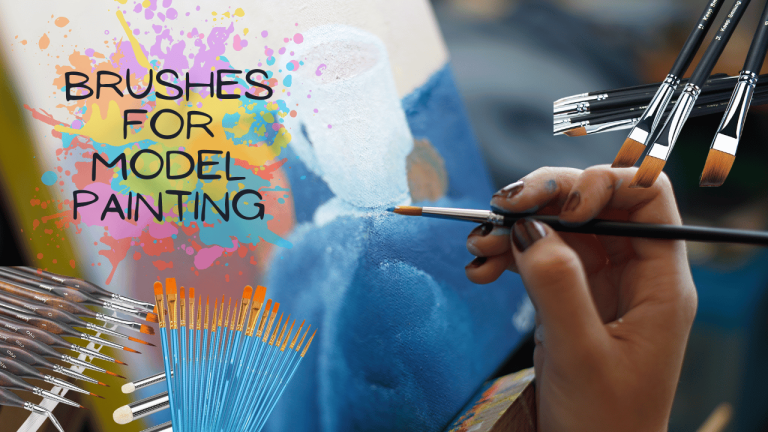A strong art portfolio is an indispensable tool for artists showcasing their talent, creativity, and unique style to potential clients, galleries, schools, or employers. Whether you’re a seasoned professional or an aspiring artist, a well-crafted portfolio can make a significant difference in leaving a lasting impression and opening doors to exciting opportunities. In this blog post, we will guide you through creating an exceptional art portfolio that effectively represents your artistic journey. From selecting the right artwork to crafting an engaging artist statement and presenting your portfolio online, we will cover all the essential steps to help you stand out in the competitive world of art. Let’s dive into the art of showcasing your talent.
Purpose of Your Art Portfolio

Understanding the purpose of your art portfolio is crucial for creating a compelling and effective showcase of your artistic journey. Firstly, identifying your target audience is essential to tailor your portfolio to resonate with those who will appreciate and connect with your art. Whether you aim to appeal to potential clients, galleries, art schools, or fellow artists, knowing your audience will guide your selection and presentation of artwork.
Secondly, defining your artistic goals and style is the foundation of your portfolio’s narrative. Clearly articulating what you wish to convey through your art and the themes that inspire you will give your portfolio a cohesive and impactful direction. Highlighting your artistic growth and evolution over time adds depth and authenticity to your presentation.
A well-crafted art portfolio reflects not only your technical skills but also your artistic journey and vision. By understanding your target audience and defining your artistic goals and style, you can create a purposeful portfolio. It’ll communicate your passion and captivates viewers, opening doors to new opportunities and fostering connections within the art community.
Choosing the Right Artworks
Choosing the right artwork for your art portfolio is a critical step in creating a compelling and cohesive presentation. Start by selecting your best and most representative pieces that showcase your technical proficiency and artistic vision. Focus on artworks that resonate with your artistic goals and style, as well as those that have received positive feedback from others.
Consider the diversity in mediums and subjects to demonstrate your versatility as an artist. Including a range of artworks in various mediums, such as paintings, drawings, sculptures, or digital arts can show your adaptability and skill in different techniques. Moreover, featuring artworks that explore diverse subjects and themes will further highlight your creativity and ability to express your ideas in various ways.
Ensure that each artwork contributes to the overall narrative of your portfolio and complements the others. Strive for a harmonious balance between different styles and subjects, maintaining a consistent level of quality throughout. By thoughtfully selecting your artwork, you can create an engaging and captivating portfolio that leaves a lasting impression on your audience.
Organizing and Structuring Your Art Portfolio
Organizing and structuring your art portfolio is essential to make a strong and lasting impression on your audience. Start by creating a cohesive and visually appealing layout that allows your artwork to shine. Consider the flow and arrangement of pieces, ensuring they complement each other and tell a compelling story about your artistic journey.
Decide whether you want a physical or digital portfolio, depending on your needs and preferences. A physical portfolio offers a tangible and tactile experience, allowing viewers to interact with your artwork in person. On the other hand, a digital portfolio offers the advantage of easy accessibility and the ability to reach a broader online audience.
Regardless of the format you choose, maintain consistency in image quality, presentation, and overall design. Include clear titles, descriptions, and any relevant background information about your artwork. Remember that a well-organized portfolio not only showcases your talent but also reflects your professionalism as an artist.
Presenting Your Art Professionally
Presenting your art professionally is crucial to make a lasting impact on potential clients, galleries, or art institutions. Start by properly photographing and digitizing your artwork. Use high-quality cameras or professional scanners to capture clear and accurate representations of your pieces. Pay attention to lighting, angles, and color accuracy to showcase your art in the best possible way.
Labeling and providing context for each piece are equally important. Include titles, dimensions, medium, and the date of creation for each artwork. Providing a brief description or artist statement can add depth and context to your portfolio, helping viewers understand your creative process and inspirations.
Consider creating a consistent layout for all the artworks, keeping the presentation clean and uncluttered. Use a minimalistic design that directs the focus to your art. Prioritize quality over quantity, and only include your best and most representative pieces. By presenting your art professionally, you demonstrate your dedication to your craft and increase your chances of making a strong impression on your audience.
Writing an Artist Statement
Writing an artist statement is a vital component of your art portfolio as it provides viewers with insight into your creative process and vision. Craft a compelling artist statement that eloquently communicates your inspirations, artistic journey and the themes that drive your work. Use clear and concise language, avoiding jargon, to make it accessible to a wide audience.
Integrate your artist statement strategically into your portfolio. Place it at the beginning or within the introduction section, where it can set the tone for the entire collection. Ensure that it complements the visual elements of your portfolio and enhances the overall understanding of your art.
Remember, an impactful artist statement can deeply connect viewers with your art, making it a powerful tool to engage and leave a lasting impression on those who experience your portfolio.
Additional Supporting Material
Enhancing your art portfolio with additional supporting material can provide valuable context and depth to your artistic journey. Consider including sketches, works in progress, and process images to showcase the evolution of your artwork. These behind-the-scenes glimpses give viewers insight into your creative process and the effort put into each piece.
Incorporate relevant awards, exhibitions, and recognitions to demonstrate your achievements and professional growth as an artist. Highlighting accolades can instill confidence in viewers and establish credibility for your work. Organize this information in a separate section or alongside the corresponding artworks.
Remember to curate the supporting material carefully, ensuring it complements and strengthens the narrative of your portfolio. Strive for a cohesive presentation that seamlessly weaves together your creative journey, artistic vision, and accomplishments, leaving a lasting impression on your audience.
Showcasing Your Art Portfolio Online
Showcasing your art portfolio online is a powerful way to reach a global audience and potential clients. Build an artist website or an online portfolio that reflects your style and brand. Include high-quality images of your artwork, along with a well-crafted artist statement and contact information. Optimize your online presence by utilizing social media platforms and art-specific websites to share your work, connect with fellow artists, and engage with art communities. Regularly update your online portfolio with new artwork and ensure that it is easily navigable and mobile-friendly. Embrace the digital landscape to increase your visibility, attract potential opportunities, and establish a strong online presence within the art world.
Seeking Feedback and Revising
Seeking feedback and being open to revisions is a crucial step in perfecting your art portfolio. Reach out to mentors, peers, and professionals in the art community to get constructive criticism and fresh perspectives on your work. Listen attentively to their suggestions and take note of areas that could be strengthened or refined. Use this valuable input to make necessary revisions to your portfolio, ensuring that it aligns with your artistic goals and presents your work in the best possible light.
Embrace the iterative process of improvement, and don’t be afraid to make changes that enhance the overall impact and cohesiveness of your portfolio. Continuous feedback and revision will help you create a strong and captivating portfolio that truly showcases your talent and artistic vision.
Preparing Portfolio for Submission
As you prepare your art portfolio for submission, it’s essential to carefully follow guidelines provided by galleries, schools, or potential employers. Pay attention to specific formats, file sizes, and any additional requirements they may have.
Ensure your portfolio reflects your target audience and aligns with the specific opportunities you are seeking. Practice presenting your portfolio professionally for interviews or reviews, being prepared to discuss your artistic process, inspirations, and artistic goals. Confidence and clear communication about your work will leave a lasting impression on reviewers. Remember to stay organized and showcase your best and most relevant pieces.
By adhering to submission guidelines and presenting yourself professionally, you increase your chances of making a strong impact and opening doors to exciting opportunities in the art world.
In conclusion, creating an art portfolio is a transformative journey that allows you to curate and express your artistic identity. By following the essential steps discussed in this blog post, you can build a compelling portfolio that captures the essence of your artistry and resonates with your audience. Remember, an art portfolio is never static; it should evolve alongside your artistic growth. Continuously refine and update your portfolio to reflect your latest works and achievements. Embrace the process, stay inspired, and let your portfolio become a true testament to your artistic brilliance.






